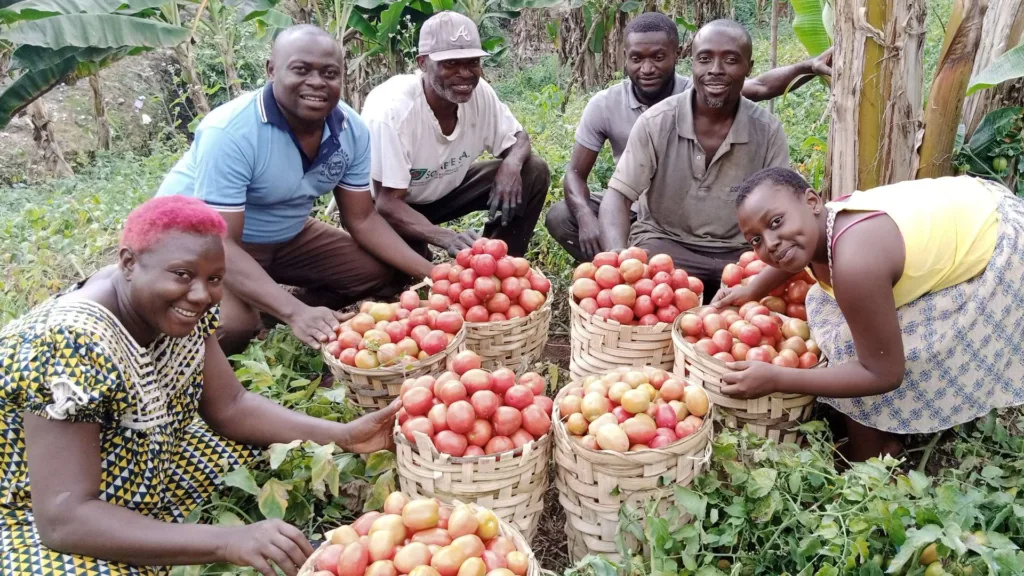The journey of a community garden doesn’t end with planning and design; it evolves into a continuous cycle of growth, community engagement, and adaptation. Sustaining a community garden poses different types of challenges. Let’s explore how to build your garden’s infrastructure, recruit and maintain a strong volunteer base, and ensure the garden’s long-term success and sustainability.
Building and Installing Garden Infrastructure
Organizing Volunteer Workdays
Volunteer workdays are not only crucial for the physical building of the garden but also for fostering a sense of ownership and community among participants. Organize these days with clear goals and tasks, such as constructing raised beds, installing irrigation systems, or landscaping communal areas. Providing tools, guidance, and refreshments can help turn hard work into a fun and rewarding experience.
Constructing Essential Elements
Key infrastructural elements like raised beds, fencing, and pathways form the backbone of your garden. Utilize sustainable materials and environmentally friendly practices wherever possible. For example, opt for untreated wood for raised beds and permeable materials for pathways to enhance the garden’s sustainability.
Installing Systems
Efficient irrigation systems, composting setups, and even solar lighting can make a significant difference in the garden’s functionality. Consider the garden’s layout and the needs of the plants and gardeners when choosing the types of systems to install, aiming for solutions that conserve resources and promote ease of use.
Recruiting Garden Participants and Volunteers
Promoting the Garden
Use a mix of traditional and digital marketing strategies to attract participants and volunteers. Flyers in community centers, posts on social media, and local newspaper articles can all raise awareness of the garden. Highlight the benefits of participation, such as access to fresh produce, educational opportunities, and being part of a community initiative.
Developing Membership Processes
Create a clear and straightforward process for people to join the garden. This might include membership applications, fees, and orientation sessions. Ensure the process is inclusive and reflects the values of the community, providing equal opportunities for all interested individuals.
Establishing Volunteer Programs
A structured volunteer program can help keep the garden well-maintained and vibrant. Identify various roles needed for garden upkeep, educational programs, and events. Offering training, recognition, and social opportunities can help retain volunteers and make their experience enriching.
Garden Maintenance and Operations
Creating Maintenance Schedules
Regular maintenance is key to a thriving garden. Develop a schedule that includes watering, weeding, harvesting, and other tasks. Assign responsibilities to garden members or volunteer teams to ensure the garden remains well-cared for throughout the growing season.
Supporting Gardeners
Provide gardeners with the tools, resources, and knowledge they need to succeed. Workshops on gardening techniques, pest management, and plant care can empower gardeners to take proactive care of their plots and contribute positively to the overall garden.
Implementing Guidelines
Clear guidelines on garden etiquette, safety, and environmental practices help maintain a harmonious and productive environment. Regularly review and adjust these guidelines based on feedback and the evolving needs of the garden community.

Sustaining Your Community Garden
Evaluating the Garden’s Success
Regular assessment of the garden’s impact on the community, the environment, and its members helps identify areas for improvement. Surveys, feedback sessions, and garden audits can provide valuable insights into the garden’s performance and areas for growth.
Engaging with the Community
Continuous engagement with the garden community and the broader local community helps keep the project relevant and supported. Host events, participate in local initiatives, and keep the lines of communication open to encourage ongoing involvement and investment in the garden’s success.
Exploring Expansion and Partnerships
As the garden matures, opportunities for expansion or the development of new programs may arise. Collaborations with schools, businesses, and other local organizations can bring new resources, participants, and energy to the garden, driving further community impact.
Celebrating Achievements
Recognize and celebrate the milestones, achievements, and contributions of garden members and supporters. Annual harvest festivals, volunteer appreciation events, and public acknowledgments can reinforce the value of the garden to the community and encourage continued support and involvement.
Conclusion: Sustaining a Community Garden Takes a Community!
A community garden is more than just a space for growing plants; it’s a dynamic community asset that requires care, dedication, and strategic planning to sustain. By building a solid infrastructure, fostering a committed community of gardeners and volunteers, and continuously seeking ways to improve and expand, your garden can become a lasting source of joy, education, and green space for your community.
Remember, the true success of a community garden lies in the strength of its community and its positive impact on the environment and local food systems. With patience, passion, and perseverance, your garden will





